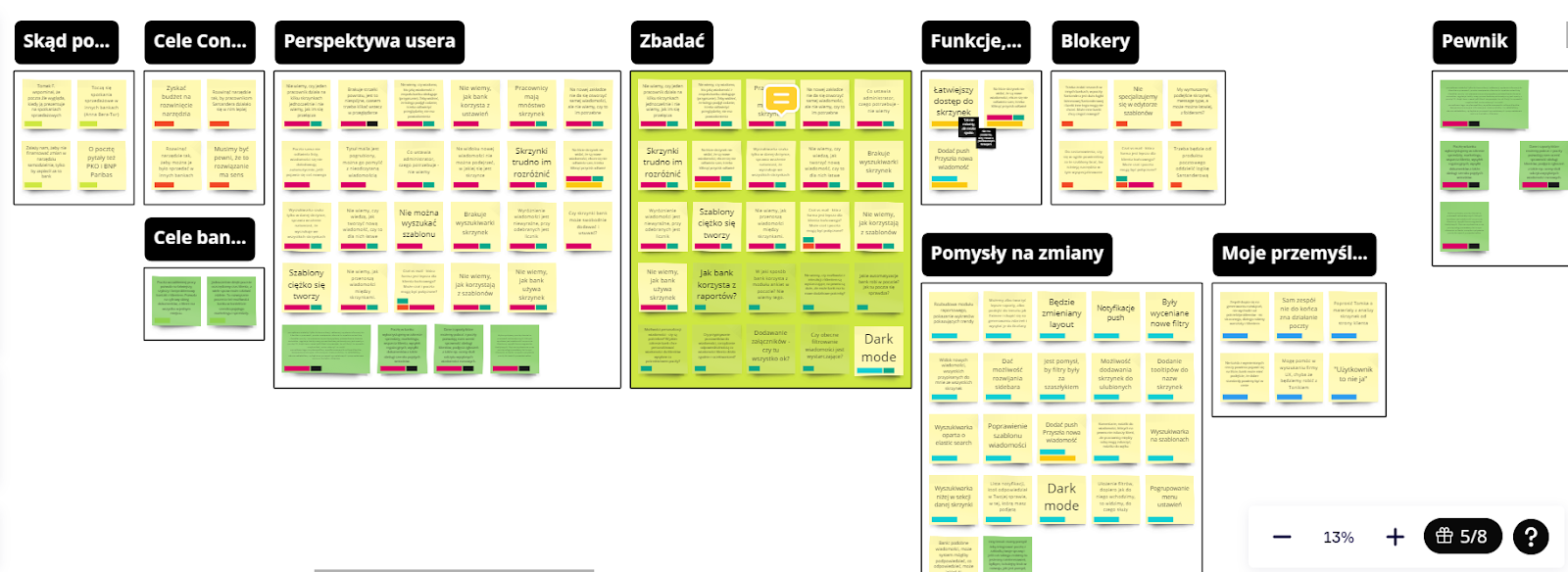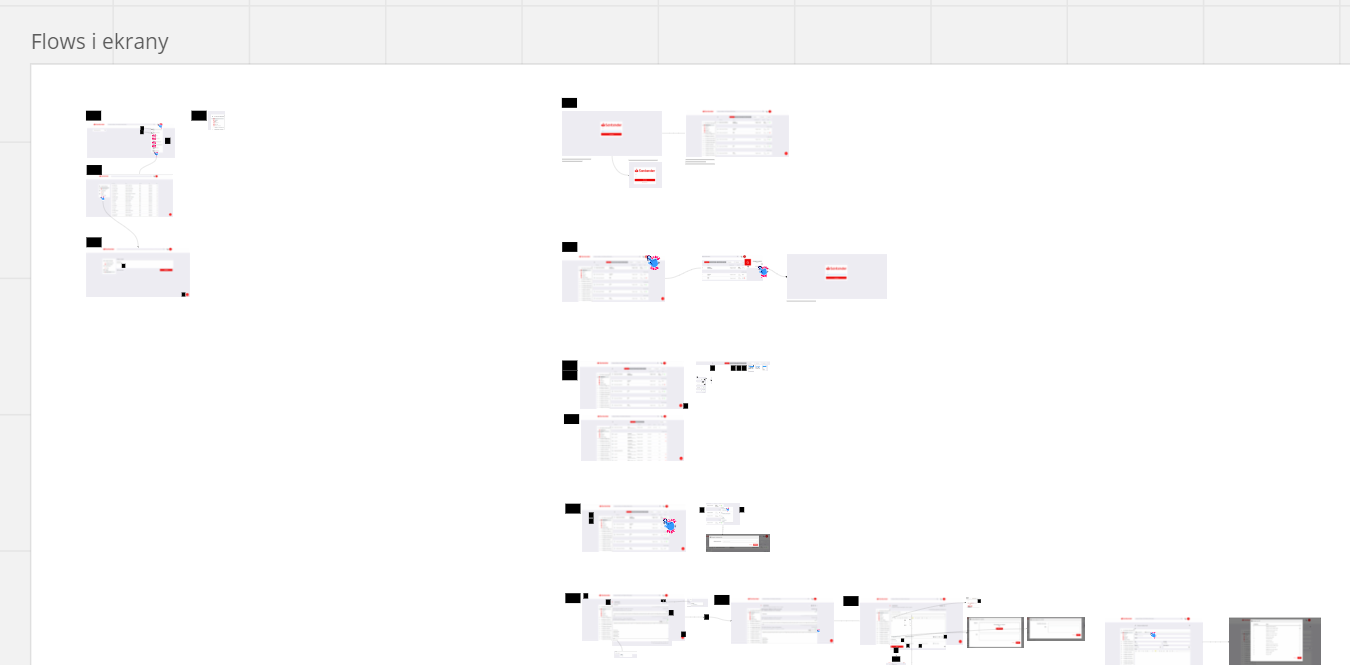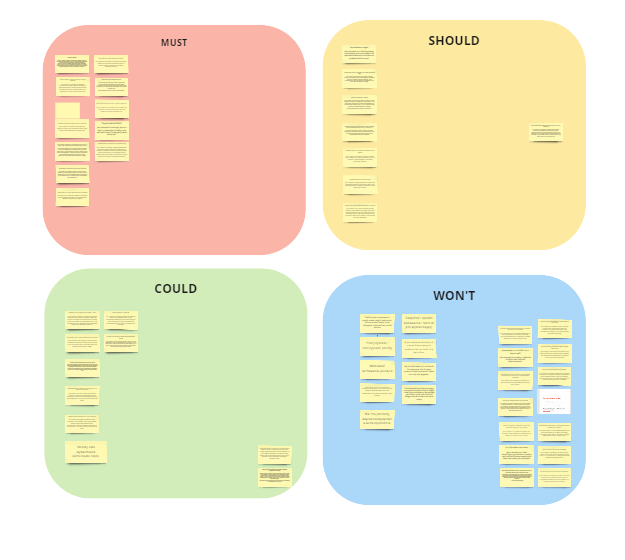Eximee Product Owners have regular contact with users. They ask what it’s like to work with the tool and analyze user feedback. During a recent research workshop with Santander bank’s back-office employees, we talked about Eximee Customer Contact Center. Based on this, we compiled a list of new features and improvements to be introduced. We created user flows and user stories and consolidated information that will serve as a baseline for UX designers’ work.
One of the core values of the Eximee team is initiative. Among other things, it manifests in building partner relationships with clients and suggesting solutions that support banks in development.
Moreover, we are convinced that good UX design requires in-depth knowledge and understanding of user needs. Therefore we use the Continuous Discovery approach and periodically collect feedback from clients.
When we heard through the grapevine our client needed improvements to the Customer Contact Center service, we decided to dig deeper.
Santander Consumer Bank implemented the first version of the Eximee Customer Contact Center in 2016. With this module, back-office employees can contact the bank’s customers. They send documents, personalized product offers, notifications, etc. They also respond to inquiries and handle complaints. Back-office employees receive dozens of messages every day, so there was a need for new functions and efficiency improvements. When developing the Eximee platform, besides global trends, we want to account for user needs. That’s why we suggested that people who use our solution in the bank participate in a research workshop and create a product roadmap with us.
We encountered several challenges during the course of the project. One was the limited availability of bank employees. We needed to talk to many back-office employees who had to perform their daily duties as well.
On top of that, we had a surfeit of ideas for Customer Contact Center development. Therefore, we needed to set priorities.
Our goal was to establish a roadmap for new features taking into account user feedback and improving UX in the long term.
We organized a series of research workshops to bring more people together and explore diverse perspectives. The workshop exercises combined individual work and discussions that gave everyone a chance to have their say. We opted for a workshop because, according to our experience, it enables achieving the best results in the shortest time.
The workshops were held completely remotely using the Miro platform.

We started with an internal meeting of the product team responsible for the Customer Contact Center. It was attended by POs, developers, testers, and analysts. We brainstormed assumptions about how bank employees use our solution and created a list of possible new features.
Based on this workshop and the user feedback that reached us earlier, we created a list of hypotheses to validate. It helped create a plan for workshops and exercises to perform with Santander’s back-office staff.
The workshop was attended by team leaders who use Customer Contact Center daily and analysts. From Eximee’s side, the workshop was moderated by a Product Owner and a UX researcher. We started with a “bird’s eye" view.
We collected insights into how the Eximee Contact Center specifically assists bank employees. It turned out that it is primarily instant communication with customers and assigning tasks to employees.
We learned which of the most frequently used functions are worth expanding or optimizing and what features should be added to accelerate work even more. These included:
We put our creativity into action and generated ideas for new features that could be implemented, provided there were no limitations. One such feature is the ability to check the status of customer communication conducted in different channels, such as chat or call center, and making it available in one place so that a customer can check the status of their case and communication history regardless of the channel they chose to contact the bank. It is made possible by the Case Repository module, which stores information about the cases processed across all channels and systems.
The next workshop was about immersing in the situation of a new back-office employee using the Customer Service Center. This time, the Eximee team performed the exercises, and the back-office employees took over the moderation. The Product Owner and the researcher were “trained" in using the tool as if they had just joined the team.
It gave us a thorough understanding of the stages of learning the tool and the most common paths users take. We became aware of the problems and difficulties faced by people who are just learning how to use mail. Based on this, we identified a few areas to be further explored at the next workshop.
Based on the conclusions of the previous meetings, we prepared possible solutions to the most severe problems and presented them to the bank’s team. We inquired about the details of using the advanced mail functions. By doing so, we got a solid basis for drawing final conclusions.
After each workshop with the client, we synthesized the information into findings. After the last meeting, we drew the final conclusions and presented them as user stories that were easy to understand for analysts as well as designers and developers.
We divided the user stories into 4 categories that were clearly outlined during the research.
The sets of user stories will help with specific projects (we don’t plan to address all the ideas, and certainly not at the same time).
We wanted to make it easier for designers to understand how users navigate the tool and in what steps they can perform certain tasks. To this end, we developed user flows in the form of wireflows, meaning diagrams with descriptions and successive screens of the interface. Designers will then rethink these screens to create and test prototypes with users.


As already mentioned, we carried out this project to find out what changes and innovations users would prioritize, so we made an evaluation of the usefulness of the new features. The Product Owner had the deciding vote.
The “must have" activities are the ones that directly affect the speed and quality of work of the bank’s consultants and thus raise the level of customer satisfaction in terms of communication with the bank.
The project has solidified the importance of direct conversations with system users and the value of their feedback.
The design of new Customer Contact Center screens using the research results is planned for Q3 2023.
Make an appointment for a discovery meeting and find out how we can help you.